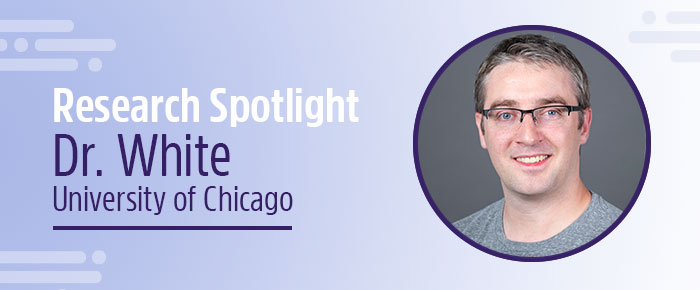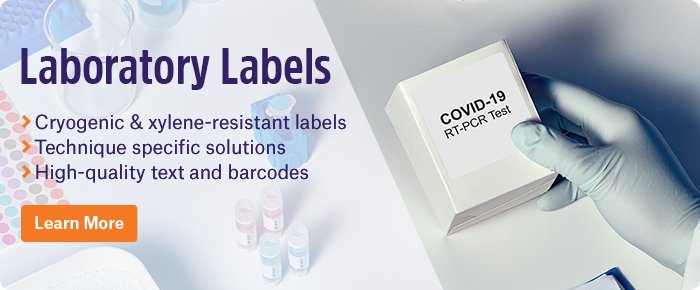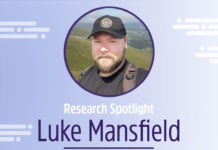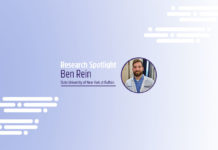
This week’s Research Spotlight focuses on Dr. Michael White, a senior researcher from the Radiation Oncology Department of the University of Chicago. His research currently centers around the intracellular splicing mechanisms cancer cells utilize to escape immune responses. He also has a wealth of experience in the field of fibrosis and regenerative medicine, topics that he’s followed to great success throughout his career.
Some projects take longer than others
I had the chance to speak to Dr. White about his early career and how his graduate studies shaped his later career. What I found was something that’s common among many PhD projects: unpredictability.
“My PhD was a little unusual in that the initial project my advisor gave me only generated negative results. Instead, I followed a stray observation that certain tumors upregulated—and others downregulated—stromal tissue, and I turned that into a project. It was rewarding, but it was the exact opposite of a well-designed project. A well-designed project is publishable no matter the outcome. For instance, which pathway, x or y, contributes more to cell proliferation?’ That’s a well-designed project. For mine, I first had to identify factors in conditioned media through purification and mass spectrometry, then proceed to characterization. It was a good project, but in hindsight it was more of a postdoc project than a grad student project. Interestingly, the initial project that only generated negative results WAS a well-designed project; it’s just that there isn’t a journal of negative results. There really should be, though.”
Dr. White mentioned that it wasn’t his only PhD project. His second, developing chemorepellents to treat acute respiratory distress syndrome (ARDS), which is caused by uncontrolled systemic inflammatory responses, went much differently.
“While I was job hunting at the end of my grad studies, I conceived and completed a project on the chemorepulsion of neutrophils as a treatment for ARDS. So, in the first 5 years of grad school, I conceived and completed one project. In my last 6 months, I completed an entire second project. I suppose the lesson is that a lot of time in grad school is spent as an apprentice, learning how to do science, mastering lab techniques, and learning the literature. Once you master those skills, you can move a lot faster.”
Searching for anti-fibrotics in Chicago
After completing his PhD, Dr. White took a job at the University of Chicago, where worked on a new branch of research.
“I wanted to work in Chicago because I’m from there, and I wanted to be close to family and friends. The transition between grad studies to post-doctoral involved setting up my boss’s lab and involved learning to think in new ways. It was very much like starting grad school again, although I was more experienced this time around.”
This time, instead of focusing on ARDS or cancer, he jumped onto a project searching for novel anti-fibrotic molecules.
”The anti-fibrotics I discovered were against novel targets in the mechanoproteome, which is the group of proteins that sense and transduce mechanical stress in the cell’s environment. The thought was that if we could “convince” scar tissue cells that their environment was no longer stiff, we could reverse their pro-fibrotic phenotype. It seems to have worked. We patented the mechanoproteome targeting antibodies and siRNA this year.”
So, how exactly do these anti-fibrotics work?
“They’re detailed in my pre-prints. Essentially, mechanoproteome activation is an essential precursor to myofibroblast differentiation. Specifically, myofibroblasts must be 1) bound to a 2) surface of suitable composition and 3) have sufficient stiffness. I call this the 3-factor authentication model of myofibroblast differentiation. This model has utility for any disease where myofibroblasts are involved, from tumors (stroma) to fibrosis (e.g. in the lung or kidney). I performed an RNAseq comparing transcripts in myofibroblasts on soft and stiff surfaces and identified anti-AMB2 and Anti-A3 blocking antibodies, as well as an siRNA against talin2, which is a spring protein that is essential for focal adhesion formation. The antibodies contain a targeting domain that delivers them to sites of fibrosis; because fibrosis is characterized by leaky vasculature and exposed extracellular matrix, attaching a small peptide derived from decorin increases the proportion of antibody delivered to the tissue by about two-fold. So overall, these anti-fibrotics work by targeting to sites of fibrosis and blocking key mechanoproteome proteins that myofibroblasts depend on to maintain the myofibroblast phenotype.”
I asked Dr. White where he wanted to go with these compounds, and his intentions lay mainly with the pharmaceutical industry.
“Regarding the patents for these compounds, I just went through the I-Corps program, so I hope to be able to license them. There were also some other failed treatments we identified in the RNAseq screen, some of which may be winners from the dataset, but I’d have to figure out how to improve their anti-fibrotic potency. A good project never really ends, it just morphs into something else. I think the next step is improving these anti-fibrotics or improving some of the failed candidates.”
Communication is key
I spent some time with Dr. White talking about what he most likes (and dislikes) about working in academic research. A major theme that came from my interview with him was something nearly all academics can understand: accomplishment.
“On a macro level, I enjoy the feeling of accomplishment in finding new pathways and receptors. On a day-to-day level, just advancing the research feels good. That doesn’t happen all the time, but I try to accomplish something each day, whether it’s gathering data, planning an experiment, freezing down cell lines, or organizing the lab.”
And what are Dr. White’s pet peeves?
“One thing that frustrates me is poor communication in the lab. Co-workers have to communicate well about what tools/expertise they have to help one another. I just finished a project on targeting existing treatments to fibrosis, entirely separate from the novel anti-fibrotics I worked on previously. This new paper shows that targeting moieties increases the local concentration of IL-10 and rapamycin by 1.5 to 3 fold in fibrotic organs. This project wouldn’t have been possible without communication between myself, collaborators at Northwestern University, surgical techs, and chemists from the Hubbell lab. It was an easy project to conceive and finish because we all had varying expertise and communicated well. It was a ‘light bulb’ moment when we realized that, with just the expertise and molecules we had already developed, we could publish a pretty good paper within only a year, just by working together. That kind of cooperation is vital to success and is only possible with lots of communication about A) your current work, B) the tools you have at your disposal, C) your scientific background, and D) your ideas. With good communication, even ‘half-baked’ or ‘pie-in-the-sky’ ideas can become very achievable, very quickly, with shared expertise. Good, constant communication about old papers, new ideas, failed projects, ‘back-burner’ projects, grants, and collaborations can lead to new projects. I’ve been fortunate to be in labs with good communication so far in my career, and I hope that trend continues.”
With so much under his belt and some new research into the splicing mechanisms in cancer cell immune evasion soon to be published, I ended our interview asking him where he’d like to be in a few years and what he hopes to accomplish after all that time.
“Hopefully I’ll be in industry or in a faculty position. In terms of accomplishments, I hope to continue my research, find treatments for diseases, and continue to make discoveries. I’d also like to try to research global warming solutions as well, maybe using bioengineering approaches with plants or coccolithophores to increase carbon sequestration. I know that sounds crazy, but I think that such approaches might be useful for carbon capture. I have no expertise in this area in the slightest, but I’m going to try to develop some.”
LabTAG by GA International is a leading manufacturer of high-performance specialty labels and a supplier of identification solutions used in research and medical labs as well as healthcare institutions.




